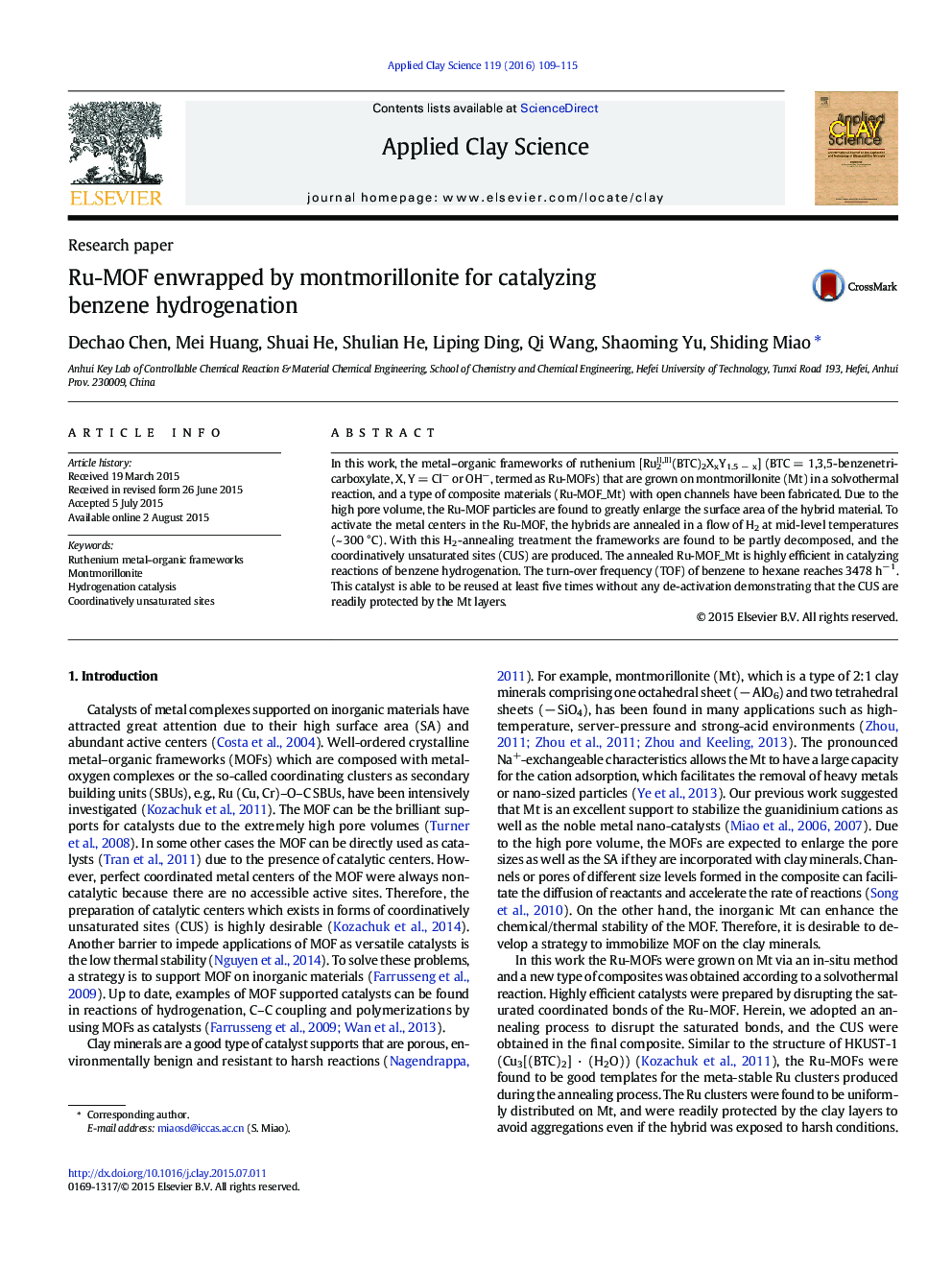| Article ID | Journal | Published Year | Pages | File Type |
|---|---|---|---|---|
| 1694300 | Applied Clay Science | 2016 | 7 Pages |
•Metal–organic frameworks of ruthenium were for the first time grown on montmorillonite.•The Ru-MOF is able to enlarge surface area of the composite materials.•Coordinatively unsaturated sites (CUS) are produced after H2-annealing.•The CUS are readily preserved by clay layers and can sustain harsh reactions.•The hybrid was highly active in catalyzing reactions of benzene hydrogenation.
In this work, the metal–organic frameworks of ruthenium [Ru2II,III(BTC)2XxY1.5 − x] (BTC = 1,3,5-benzenetri-carboxylate, X, Y = Cl− or OH−, termed as Ru-MOFs) that are grown on montmorillonite (Mt) in a solvothermal reaction, and a type of composite materials (Ru-MOF_Mt) with open channels have been fabricated. Due to the high pore volume, the Ru-MOF particles are found to greatly enlarge the surface area of the hybrid material. To activate the metal centers in the Ru-MOF, the hybrids are annealed in a flow of H2 at mid-level temperatures (~ 300 °C). With this H2-annealing treatment the frameworks are found to be partly decomposed, and the coordinatively unsaturated sites (CUS) are produced. The annealed Ru-MOF_Mt is highly efficient in catalyzing reactions of benzene hydrogenation. The turn-over frequency (TOF) of benzene to hexane reaches 3478 h− 1. This catalyst is able to be reused at least five times without any de-activation demonstrating that the CUS are readily protected by the Mt layers.
Graphical abstractFigure optionsDownload full-size imageDownload as PowerPoint slide
